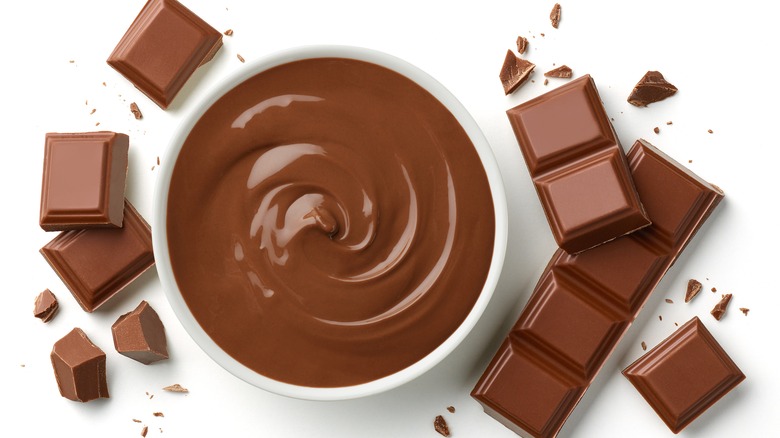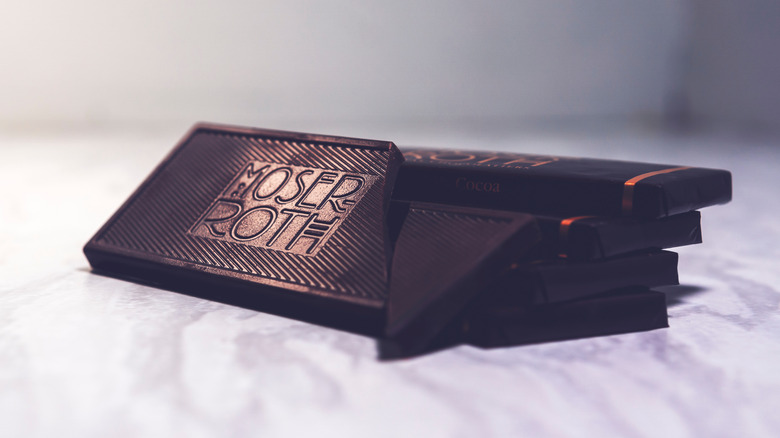Most Of The World's Chocolate Comes From This Country
If you're a true connoisseur of chocolate, you know nothing but the best will quench a craving for the smooth, rich, velvety, melt-in-your-mouth pleasure of good chocolate. Anything less is just a tease, a disappointment that falls far short of the momentary bliss we experience when we savor, say, European chocolate. Okay, okay. That's a subjective opinion. Plenty of people love American chocolate, but for the purposes of this discussion, let's agree there is a difference between European and American chocolate. It comes down to how it's made.
According to Gourmet Boutique, four factors distinguish American chocolate from its European counterpart: cocoa content, sugar content, fat content, and cocoa bean sourcing. Chocolate produced in the United States has a lower percentage of cacao. With less cacao, U.S. producers use more sugar, so the end product is noticeably sweeter. European chocolate has a higher fat content resulting in a smoother, richer blend. And finally, the source: European producers tend to import cacao beans from West Africa, while U.S. manufacturers source from South America.
But it gets even more complex. Standards for European chocolate also vary from country to country throughout the continent with four countries accounting for a whopping 40% of the world's total chocolate exports (via Investopedia). Let that sink in: 40% of the chocolate consumed around the world comes from four countries in Europe. The top producer? Germany.
Commitment to excellence
According to Investopedia, Germany, Belgium, Italy, and Poland produce more than 40% of the world's chocolate. In 2020, Germany took the top spot, accounting for 17% of the world's total chocolate exports, worth approximately $4.96 billion. Familiar German brands may include Moser Roth, Hachez, and Schogetten (via Nomads Unveiled).
Germany has an interesting history with chocolate. As one of the world's leading exporters (via University of Wisconsin European Studies), it's also home to a nation of chocolate lovers — connoisseurs who demand a quality product. But it wasn't always a sensory indulgence. According to The Chocolate Molds Museum, chocolate was first sold in Germany in the 1600s by pharmacists who touted it as a restorative remedy and drinking chocolate debuted in 1673 when a Dutchman started serving it in a Bremen café. However, high prices and taxes kept chocolate out of reach for average citizens until the early 19th century.
As chocolate became more available in Germany — and demand increased — some manufacturers began to cut corners, using lower quality ingredients. That trend led to push-back by chocolate purists, eventually leading to the establishment in 1877 of the Association of German Chocolate Manufacturers (via The Chocolate Molds Museum), a coalition of manufacturers founded to maintain quality standards.

